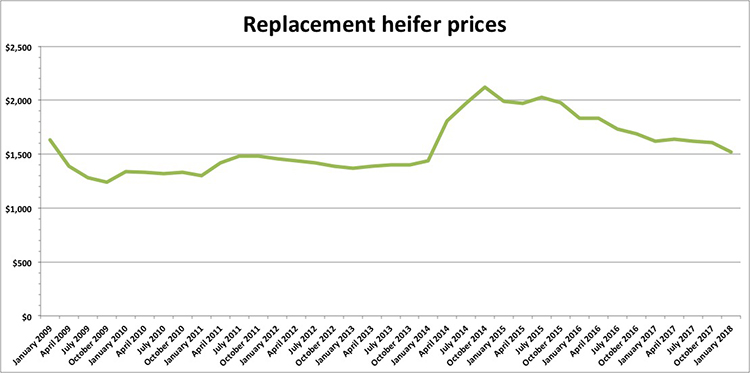
Replacement heifer prices have dropped $310 each over the past two years. If those figures continue to mirror milk prices as they have done in the past, replacement values could fall well below the $1,520 figure posted by USDA economists in their January 2018 Cattle publication.
The last swoon
As shown in the graph, the lowest trough in replacement prices took place in 2009 when dairy farmers received a disastrous $12.82 mailbox milk price that year. Mailbox milk prices eventually climbed to $20.20 by 2011, but replacement values were slower to recover. Then came another downturn in milk prices when values slipped to an $18.56 mailbox milk price in an era with high feed costs and replacement values held steady below $1,500.
The big climb
From January 2013 to October 2014, replacement values began a steady climb as milk prices reached record highs with a $24.04 mailbox milk price in 2014. That’s when replacement values reached their equivalent Mount Everest peak at $2,120 per head that October.
The following year, replacement heifer values hovered between $2,030 and $1,970 as strong balance sheets fueled growth on the nation’s dairy farms.
Then came 2016.
As milk checks diminished, so did heifer prices . . . slipping from $1,830 in January to $1,690 by year’s end. Throughout 2017, those values dropped another $80.
That brings us to this January.
We’ve been hearing reports that $1,400 to $1,500 will fetch your pick of the replacements in some very financially depressed dairy regions. Certainly cows with stronger genetic indexes have shown higher values, but those prices have dropped, too.
Given that current milk prices are below the cost of production, April’s USDA calculation could be in the $1,400 range for replacement values.








